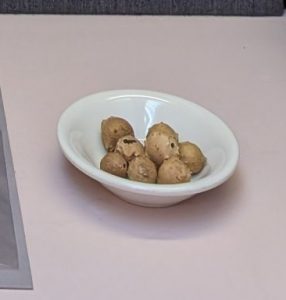
Over the course of the last year, many books in the Norman E. Alexander Library have been repaired through the excellent conservation work of Abigail Slawik and other experts whose expertise was funded through the generosity of multiple donors. Abby’s work has included the repair and rebinding of a 14th century Spanish Hebrew Bible held at Union Theological Seminary’s Burke Library (which has allowed it to be safely digitized and made available online), and her work on that manuscript was featured in 2023’s Norman E. Alexander Celebration of Collections. Abby has also rebound and repaired a number of additional manuscripts, including three that were sent to the Philadelphia Center for Conservation of Historic Art and Artifacts (CCAHA) for advanced treatment last year thanks to a generous donor.

We are therefore very pleased to be able to highlight the work on the three manuscripts that had been cared for both externally by CCAHA and internally by Columbia’s conservation experts, with a small exhibition in the Rare Book and Manuscript Library entitled: “Conservation: What, Why, Who, How?” The exhibit focuses on the “behind the scenes” work of conservation, which is often slow and unseen – as conservators are skilled in leaving little to no traces of their important repair work. Each of the items on display includes photographs of the book and its damage prior to conservation. A detailed label describes What the item is; Why it needed repair; Who did the work or made it possible, and How the work was completed. In one case, you can also see the previous binding for the manuscript on display, as well as fragments that were separated from the book as part of treatment – we always keep every part of a book, since it tells us quite a lot about its historical journey.
As a bonus, we also included a fourth book that had been conserved back in 2012 so that it could be included in an exhibition that year. Exhibitions often require a tremendous amount of conservation work, since before a book can be displayed, it must be stable enough to sit open for months at a time. Exhibition repairs can address the binding and writing surfaces of the book (paper or parchment) and allow the books to remain safe and stable for years after the exhibition has been taken down.
If you find yourself in the RBML in the next couple of months, please come and take a look at the wonderful work of conservators!
